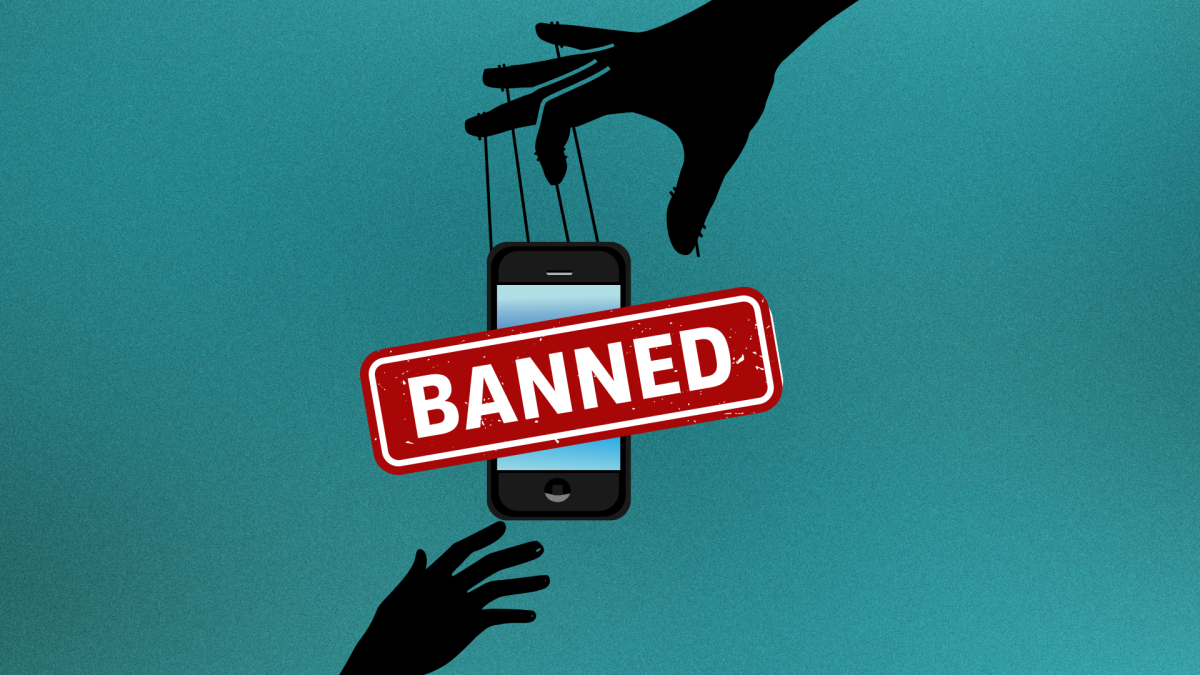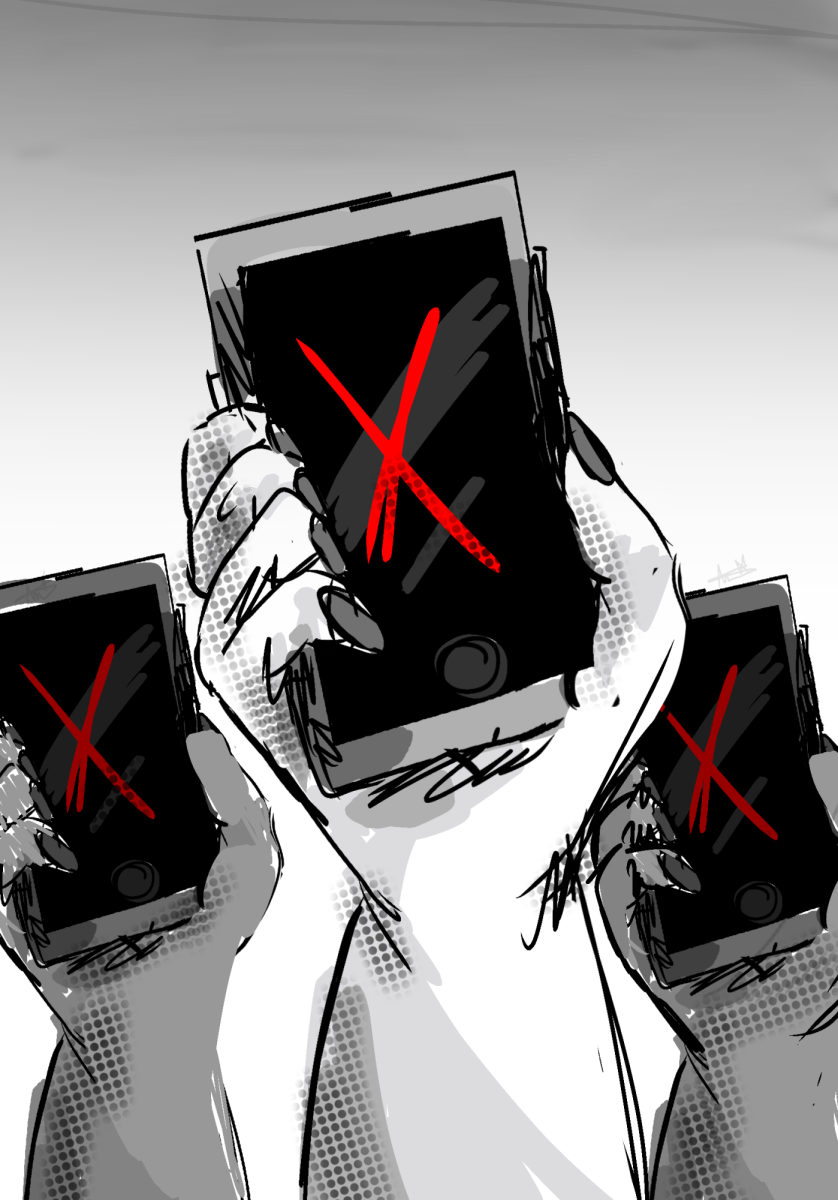We, the students of 2025, have grown up in a world where smartphones are as essential as backpacks.
They’re our calendars, our calculators, our cameras, and our connections to friends and family. Using cellphones is instinctual for people in this age group. So when our school suddenly rolled out a new phone policy with little warning, it felt like a blindside.
One random Monday, we were told to lock our phones away; the next, we were given detention and being written up for having them out.
I understand us students were given multiple chances to show that we can handle having cell phones, and that a rule had to be placed. As that’s completely valid, it would’ve been more effective to give a gradual approach so students aren’t tempted to use their phones.
This isn’t 1900, or 1980, or heck even 2005. We don’t live in a world where students can just leave their phones at home. It’s instinctual to reach for your phone out of habit, just like checking your pocket. But quickly realizing and putting it away shouldn’t be treated like a major offense that requires a trip to the office.
I get it. Phones are distracting, there’s no denying that. Teachers have every right to expect our attention in class. But this isn’t about wanting to scroll through TikTok during class. Punishing everyone because some students can’t manage their screen time isn’t the solution. It’s an overgeneralized policy that ignores the nuances of modern student life.
Outright banning phones doesn’t teach responsibility- it avoids the issue entirely. In today’s world, learning how to use technology wisely is a critical life skill. Schools should be places where students develop good habits, including when and how to use their phones appropriately. Helping students learn to manage their screen time and focus despite distractions is far more valuable than pretending those distractions don’t exist.
Research supports this approach. Studies have shown that while phone bans can reduce distractions, they don’t necessarily improve academic performance or mental health. In fact, some students report feeling more anxious without their phones, especially when they’ve become accustomed to constant connectivity during the pandemic. Teaching students to manage their device use, rather than simply restricting it, can lead to better outcomes in the long run.
Moreover, the sudden implementation of such policies without input from students can erode trust and create a sense of injustice. When students feel that rules are arbitrary or unfair, it can lead to disengagement and resentment, rather than the desired improvement in behavior.
Besides, phones are more than just distractions- they’re versatile tools that can genuinely enhance learning. Students use them to look up information quickly, access educational apps, and even play Kahoot without running into frustrating connection issues.
Many also rely on their phones to take pictures of class notes or assignments, which helps them stay organized and study more effectively. In classes like Foods, for example, students often want to take photos of their creations. But what are they supposed to use- their laggy computer? Or waste valuable class time going to the library to check out a camera, bring it back, take the picture, and then upload it to a computer? Using a phone is clearly the most practical and efficient option.
Instead of limiting access to these resources, schools should recognize that phones, when used responsibly, can play a meaningful role in academic success. At the very least, students should be allowed to use their phones for academic purposes- like research, collaboration, organization, and classroom activities- because banning them entirely ignores the reality of how modern learning works. With clear guidelines and trust in students’ ability to make smart choices, phones can be a valuable tool rather than a constant conflict.
So, let’s find a middle ground. Let’s have open conversations about phone use in school. Let’s create guidelines that respect both the need for focus and the reality of our digital lives. After all, we’re not just students; we’re the future workforce, and we need to be prepared to navigate a world where technology is present.

















